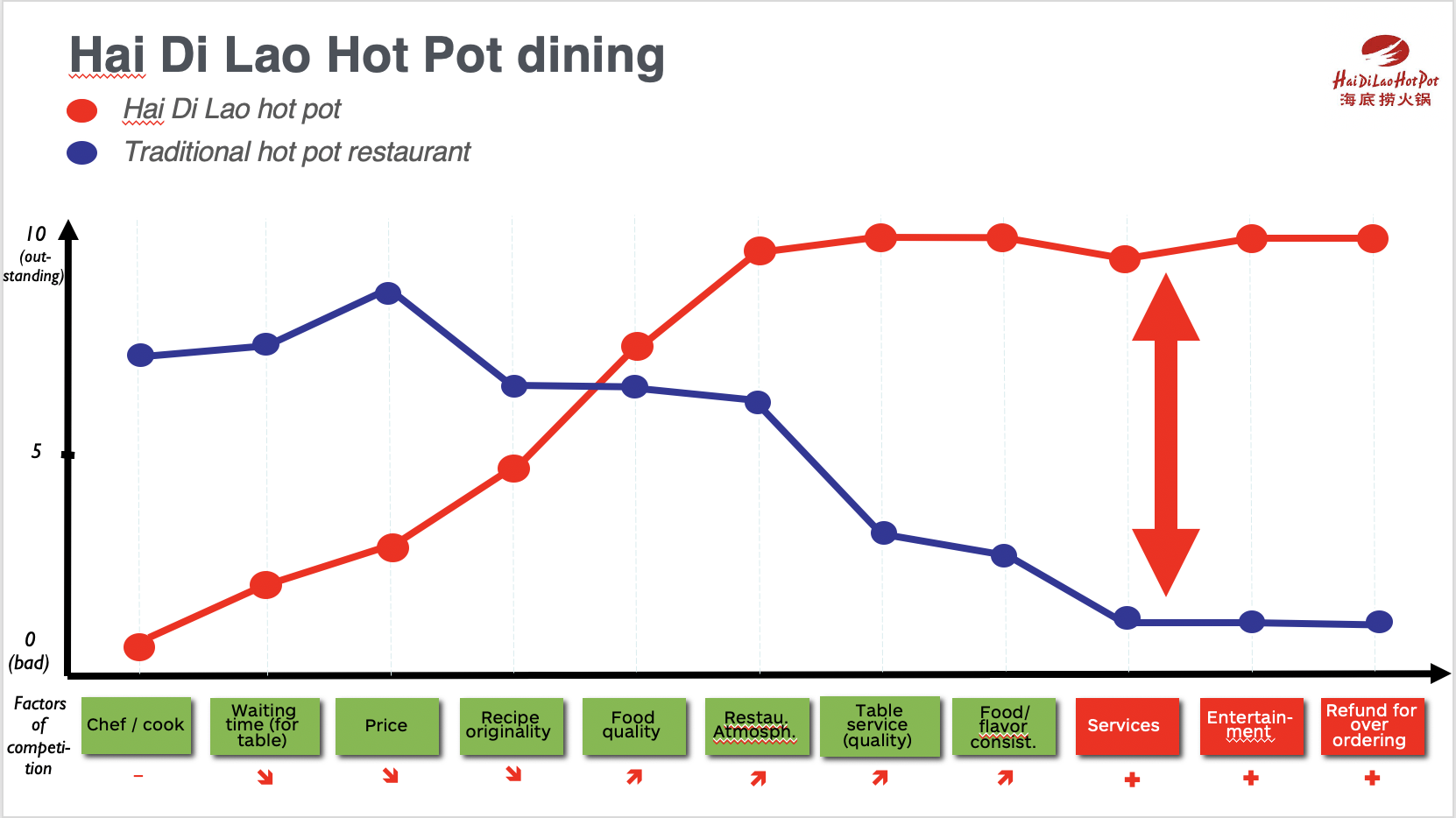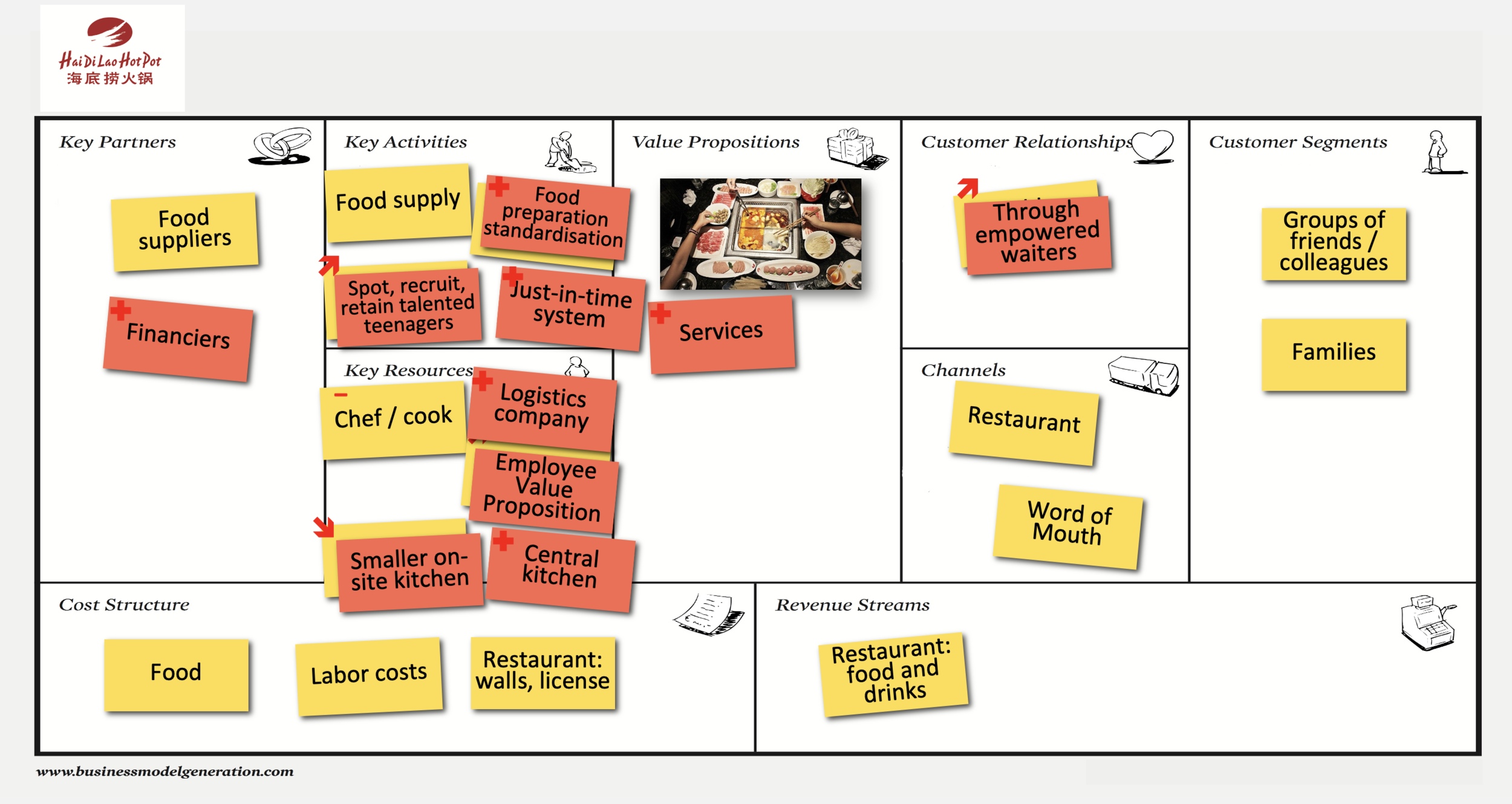Hai Di Lao. What can a hot pot restaurant teach us about innovation?
I believe in the power of stories to inspire people to innovate and solve complex problems, and I have experienced first-hand how well researched case studies can give aspiring “innovators” a new sense of possibilities.
Part of my work in the innovation space involves scouting for interesting stories, researching them and getting solid data to write the case studies I use in innovation workshops and training sessions.
At the end of 2016 I worked with Greg Bernarda on developing a few case studies to inspire “intrapreneurs” of a global food company during the kick-off of their corporate accelerator programme in China. One of the companies Greg suggested for a case study was Hai Di Lao, the surprising success in the world of Chinese hot pot restaurants. How did Hai Di Lao manage to climb to the very top of such a competitive and crowded market? How did it manage to scale from its humble beginnings as a single shop with one chef in the nineties?
Greg and I were committed to investigating these questions.
Setting the table
Let’s start by setting the scene. If, like me, you are unfamiliar with hot pot, it is a highly popular style of eating in China that involves dipping fresh meat and vegetables in simmering broth. While tasty, hot pot is also extremely simple, with a straightforward recipe and ingredients. The popularity of this cooking style in many parts of China has led to the presence of many nondescript restaurants competing ferociously for customers.
Somehow amid this competition, Hai Di Lao developed a winning value proposition that’s given them enduring customer loyalty.
In this case study we used the strategy canvas from W. Chan Kim and Renée Mauborgne. We analysed what differentiates Hai Di Lao from a ‘traditional Hot Pot restaurant’ by scoring them both on the typical factors of competition relevant for this market, as well as the ones Hai Di Lao had developed. Quickly we could visualize the market opportunity Hai Di Lao had created for themselves, taking a bet on service as a differentiator, and then evolving their value proposition from ‘great service’ to ‘great services’.
If great table service is the first thing that comes to customers’ mind when they think about Hai Di Lao, great table service is supported by a large variety of other services offered for free. This includes Wi-Fi, snacks, drinks, access to games, shoeshines, manicures and massages. Their success is visible in a compelling metric shared by few of their competitors, waiting time. Customers are frequently willing to wait for more than two hours for a table.
In the kitchen
A great value proposition for customers may be necessary but is seldom sufficient for a successful business. While their innovation in customer experience is what stands out from afar, Hai Di Lao’s backstage operations are an equally critical part of its winning business model.
If you were to walk past the crowded tables of satisfied customers into the kitchen, you’d be confronted with a scene that looks nothing like most other hot pot restaurants. You would see a much smaller kitchen with very few cooks compared to their competitors. Hai Di Lao has adopted a radical approach to their supply chain based on the principle of food preparation standardisation. Complementing this reduction in kitchen staff is a distinct employee value proposition that attracts and retains the right kind of restaurant service staff, those who thrive with a high level of autonomy towards customer interactions.
Hai Di Lao’s unique customer experience proposition combined with the professional supply chain and the high-level of autonomy given to waiters have led to a radical shift in the centre of power in their restaurants. Traditionally, power in restaurants is held by chefs – they get to call the shots and other staff largely have to follow directives. The Hai Di Lao model largely eliminates this kitchen-centric model and devolves power to the waiters, who have full autonomy to make the decisions required to deliver the quality of experience that continues to pack the house each night.
These innovations in their business model are the real ‘secret sauce’ that has allowed their business to scale while maintaining consistency in food quality and customer experience.
Later, Hai Di Lao also used their core strength, the restaurant, as a platform to launch other products and services, such as home food delivery and sauces sold in food stores.
In the first part of this case study, we saw how great table service made Hai Di Lao successful, and if we go back to the nineties for a moment I can guarantee that nobody back then could have predicted that great service would be a successful differentiator in the restaurant industry in China.
Then, in the second part of the case study we illustrated how innovation in backstage operations also played a key role at Hai Di Loa to build a successful business model.
Hai Di Lao is a great case study to illustrate how value proposition innovation can trigger success even in highly crowded and seemingly unpromising industries. The case also illustrates the importance of innovation in backstage operations. At the end of the day, a great value proposition always needs to be embedded in a sustainable business model.
One last thing I found fascinating in Hai Di Lao’s case. It shows that the unexpected can happen as the business model they built to scale their success also challenged orthodoxies and taken for granted power structures such as the role of the chef in a restaurant.












